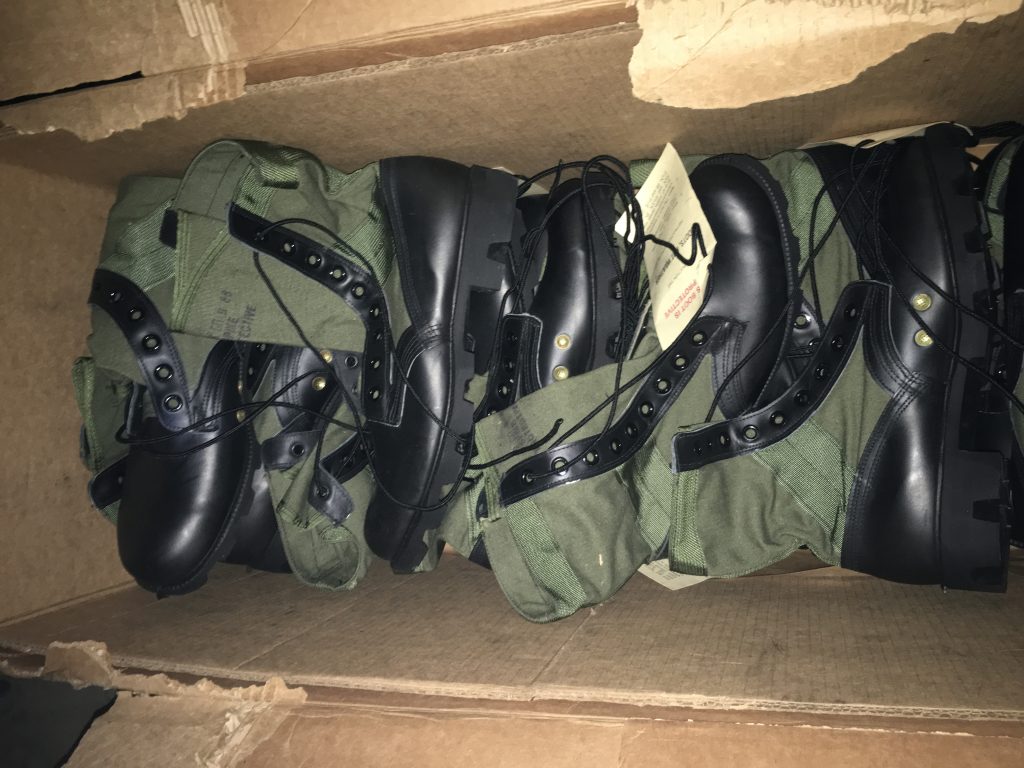
The use of jungle boots in the military predates World War 2 where small units in Panama were given these to experiment with a boot that would protect their soldiers from the harmful effects of wet feet. The concept was not to keep the water out of the boot. That was impossible without wearing rubber. Rubber boots in a hot humid environment would not have been a good solution. The lightweight canvas upper and leather lower design that the military came up with included water drain holes in the instep to let water flow through. Along with a Saran mesh insole, the idea was to keep the wearer’s foot up off of the sole so that air could be exchanged with water through the drain holes. The drain holes featured a screen in order to keep the bugs out. Also, there was a stainless-steel plate inside the sole to keep out the “punji” stakes that were hidden in booby traps by the “VC”
By the time we were involved in Vietnam, several modifications and improvements were made to the boots. Most noticeably was the introduction of the “Panama” sole. This sole was designed to throw-off mud quicker. The jungle boot continued to be used throughout the 1970’s and 80’s. Some Marines even used the boot into the 1990’s. The green jungle boots were used in Desert Storm as well until the Type 1 Desert boot came along.

